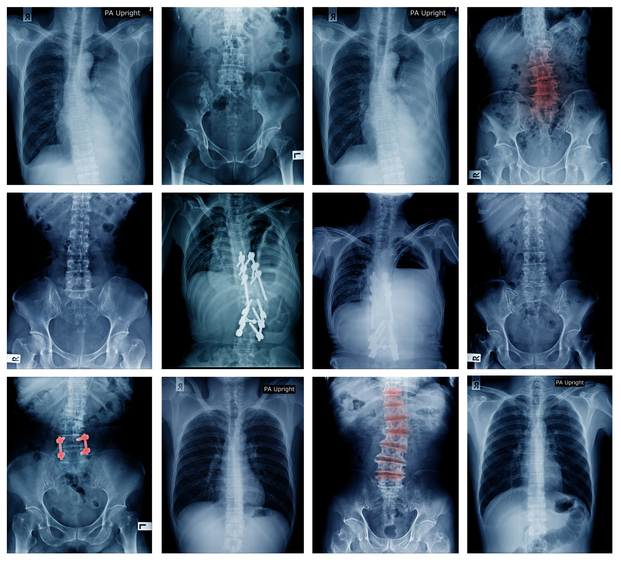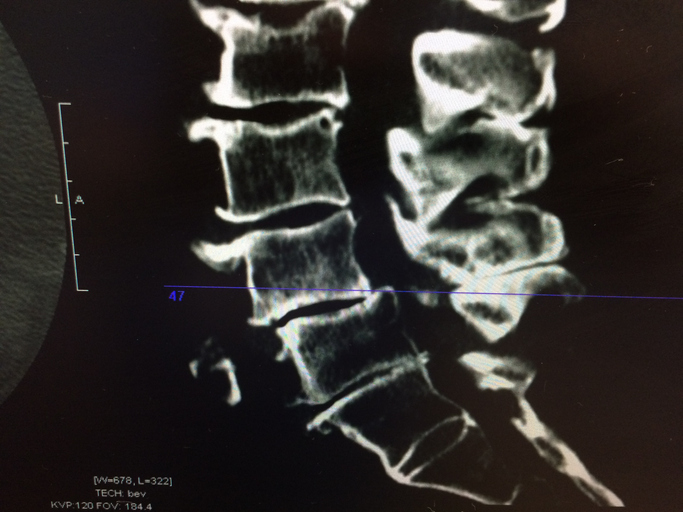Pain
What Is Cervical Spinal Stenosis?

Spinal stenosis is a narrowing of the spinal canal. It occurs when the bony openings within the spine (foramina) begin to narrow, placing pressure on the nerves traveling throughout the spine. This reduced nerve space can occur within the spinal cord or where the spinal nerves exit the spinal canal.
The spine (backbone) runs from the neck to the lower back. The bones of the spine (vertebrae) form the spinal canal, which houses the spinal cord and nerves. If a spinal nerve or the spinal cord becomes compressed, pain, numbness, muscle weakness, or tingling may occur. Cervical spinal stenosis occurs in the neck area.
Symptoms
Some people with spinal stenosis may not notice any signs of a problem; however, symptoms typically begin gradually and worsen over time. Symptoms of cervical spinal stenosis include, but are not limited to, the following:
- Neck pain
- Walking or balance issues
- Hand, arm, foot or leg weakness
- Trouble using fingers or hand
- Leg spasms
- Tingling or numbness in a hand, arm, foot or leg
- Urinary urgency or bowel dysfunction (in severe cases)
Causes
While some people are born with a small spinal canal, spinal stenosis most often occurs after the age of 50 due to degeneration of the spine and narrowing of the spinal canal. Other causes of cervical spinal stenosis include, but are not limited to, the following:
- Bone spurs
Extra bone can grow on the spine due to wear-and-tear damage from arthritis. They can push into the spinal canal, resulting in nerve damage and narrowing of the spinal canal. - Spinal osteoarthritis
Spinal osteoarthritis involves the gradual breakdown of cartilage in one or more joints. When the protective cushioning of cartilage deteriorates, the bones in the joint eventually rub together, causing inflammation and pain. Inflammation caused by spinal osteoarthritis can also contribute to narrowing of the space within the spine. - Herniated discs
Spinal discs, which act as shock absorbers between the vertebrae, regularly dry and crack with age. This allows the soft inner material to escape and place pressure on the spinal cord or nerves. - Degenerative disc disease
Degenerative disc disease (DDD) occurs when spinal discs lose hydration and begin to flatten. This can cause the disc to push into the spinal canal and place pressure on the facet joints. - Paget’s disease of bone
Paget’s disease of bones occurs when the bones grow abnormally large and brittle. It is the result of the body generating new bone tissue at a faster rate. This can cause the spinal canal to be narrow and nerve problems to occur. - Thickened ligaments
Ligaments, which help hold the bones of the spine together, may become thick over time. As the ligaments grow stiffer and thicker, they crowd the spinal canal. They can then bulge into the spinal canal, causing spinal narrowing. - Spinal injuries
Spinal injuries can occur for various reasons, such as car accidents or trauma to the spine. If a spinal injury involves fractured or dislocated vertebrae, displaced bone can cause damage to the contents of the spinal canal. Also, back surgery can cause acute inflammation in nearby tissues, which places pressure on the spinal cord or nerves. - Spondylosis
Spondylosis involves age-related wear and tear of the spinal discs. Over time, discs dehydrate, shrink, and develop signs of osteoarthritis. Bone spurs may also develop on the vertebrae. When spondylosis affects the cervical spine, symptoms include neck pain and stiffness. - Tumors or cysts
Although uncommon, tumors or cysts can form inside the spinal canal between the spinal cord and vertebrae or within the membranes that cover the spinal cord. This results in the spinal canal becoming narrower due to compression.
Risk factors
Most people that experience cervical spinal stenosis are over the age of 50. However, there are certain risk factors that increase the likelihood of developing it. They include the following:
- Scoliosis
- Spinal problems
- Trauma to the area
- Other conditions that affect bone development
- Smoking
- Poor posture
- Structural changes


















